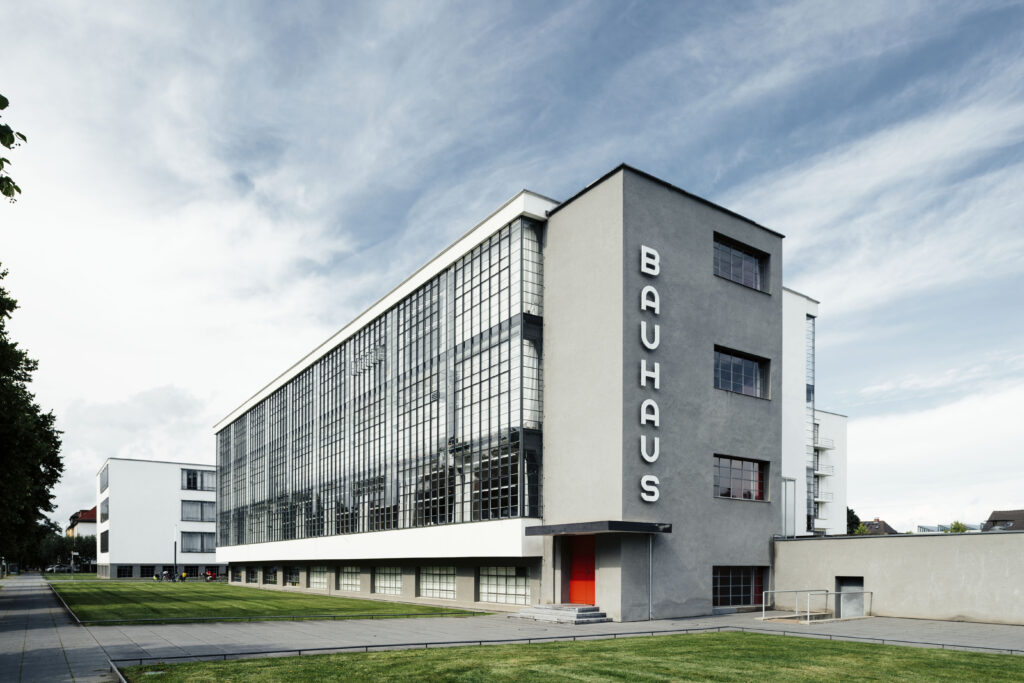
The next project that Walter Gropius worked on after the Fagus Factory was the Bauhaus Building. The Bauhaus was originally an art, craft, and technology school in the years following World War I in Weimar, Germany. Walter Gropius designed the new Bauhaus school that was moved to Dessau, Germany in 1925. A department of architecture was added within the new Bauhaus school, and the workshop within the school was used to make some of the interior features. Walter Gropius used most of the modernism design features from his Fagus Factory project for his design of the Bauhaus.
One of the same similarities with Gropius first two projects was the glass façade and load-bearing framework. The building is also very modular and geometric, as well as incorporates the flat roof and horizontal features that Gropius was known for in his first project. There is no central view of the building, making your view change as you walk around all the different sides of the architecture. I also love how the main entrance is emphasized in both of his buildings because the solid material contrasts with the clear glass. It helps to make it known where to enter the building at both places.
